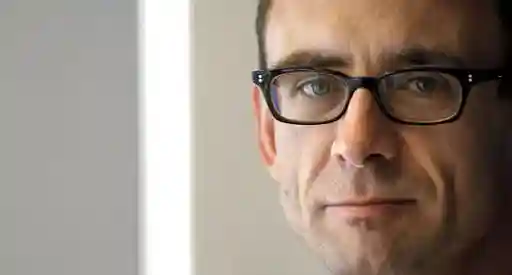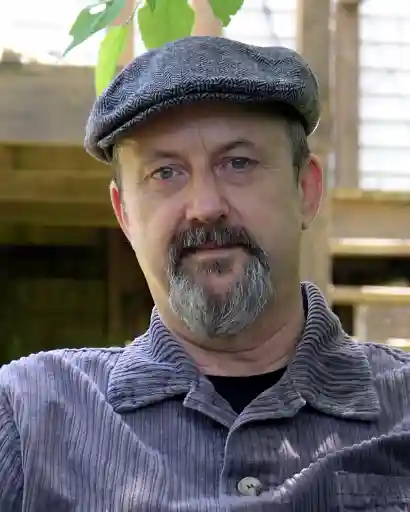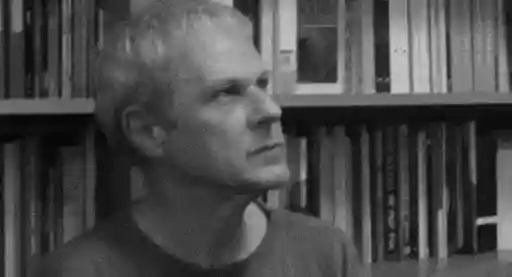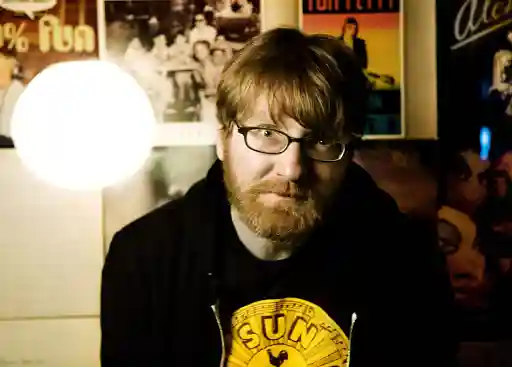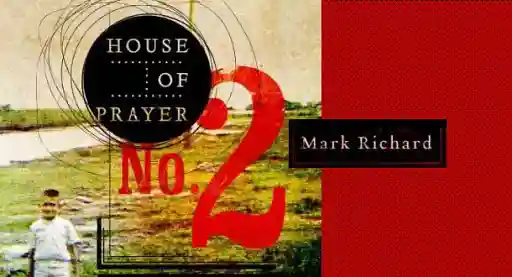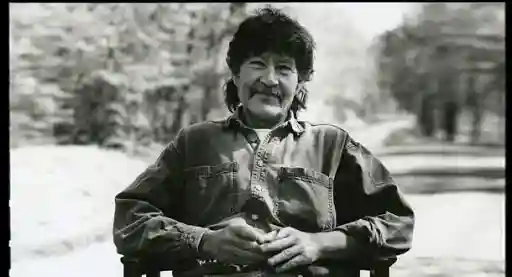One of the great joys of writing about comic books is that people will ask you what they should read, and then you get to tell them. Every so often, and with increasing frequency, I have been asked to recommend good comics that aren’t about superheroes. There was a time when I would have just stared at these people with naked incomprehension, but eventually I learned that not every comic book is about tightly spandexed superpeople throwing buildings at each other. My knowledge of these fabled tomes is limited, because keeping up with your favorite caped crusaders can be a full-time job, but thanks to a beautiful new book from the annals of Kickstarter, I now have an excellent answer for those ambitious opinion-seekers.
Will O’ the Wisp: An Aurora Grimeon Story is a gorgeously bound graphic novel, a perfect addition to any bookshelf for aesthetics alone, but it only gets better after you unlock it (that’s right) and open it up. Within lies the tale of a young girl sent to live with her eccentric grandfather on a creepy cemetery island buried deep in the Southern swamps. Accompanied by Missy, her trusty raccoon sidekick, Aurora explores the old graveyards and mausoleums that cover her new home. The local medicine woman tutors her in the ways of Hoodoo folk magic to keep the bad spirits away, but a new ghost in town is making people disappear. She will have to learn all she can, even those things the adults don’t want to teach her, in order to unravel the mystery before it’s too late. Breathtakingly illustrated and brilliantly written, Aurora Grimeon is a welcome new admission to the pantheon of young adult magicians.
Tom Hammock and Megan Hutchinson were kind enough to answer some questions about their creation.
How did you come to work together?
Tom: We met in grad school at The American Film Institute and started working on films together. We’ve been designing films together for 10 years. We’ve actually been lucky and worked on some pretty interesting work together like All The Boys Love Mandy Lane, You’re Next, and most recently The Guest. Working on films together just transitioned naturally into working on a graphic novel together.
Tell me about your collaborative process.
Tom: Part of our process is traditional in a comic sense and part is based on our film experience. We worked together to build a big book of photo reference on this world: everything from the characters to the macro world (the architecture, trees, favorite graveyards, house decoration) to the micro world (Silver’s moon charts, his cane, Roubedeaux’s boat, Aurora’s microscope). That served to get us on the same page regarding this world and the characters that live in it. From there I wrote a traditional comic script, which describes each panel, and Megan would draw them. We’d change things to accommodate each other, but basically we were on the same page and were each able to charge ahead with our own part of the collaboration.
Why tell this story as a graphic novel? Why not a movie or a regular novel?
Tom: One word: Scale! Or at least that answers the movie questions. You see, Megan and I work on independent films where the scope of the film is limited. Choosing to tell this story as a graphic novel allowed us to get crazy in terms of the world we were designing. It served as a nice break from the films we were working on to not have a budget limit us visually. And moving on to part two, this story just seemed to fit naturally into the visual nature of a graphic novel as opposed to a regular novel. Plus, if it was a regular novel, probably just one of us could have worked on it and that wouldn’t be any fun.
What are some of your favorite graphic novels? Any other influences, beyond comics?
Tom: Samurai Legend, Torso, Hellboy in general. Beyond comics, I’d say Night of the Hunter and Blade Runner did a lot for me on the film front. Mary Foley Benson (scientific illustrator), Chip Sullivan (landscape architect) and Wayne Thiebaud (painter) were very formative on the art side.
Megan: I read Dark Knight Returns, Preacher and Sandman when I was young, and that basically decided my fate as far as wanting to draw comic books for the rest of my life. As an artist, I’m mostly influenced by classic illustrators like Arthur Rackham and Joseph Clement Coll and I mix that with my love of Miyazaki and science fiction movies.
The physical design of the book is as interesting as the story inside. What inspired the book design? Was it the plan from the beginning, or an idea that came later?
Tom: The design of the book was part of the plan from the beginning. We’d gravitated toward Archaia as a publisher since their books are so stunning and we just pitched them our vision to make this book a beautiful little object. We wanted something that would feel like an older book and would be at home in Silver’s (the grandfather in the story) library. Luckily they bought into our pitch and did produce something that feels like an antique book with the embossed hard cover, marbled end-papers, and the clasp.
What was the most fun about making this book?
Tom: Exploring all the aspects of this really unique world down to the details. Like, for instance, figuring out ways to work Missy (the raccoon) into panels. For all her silence, Missy seems to be a favorite character for readers.
Describe your ideal reader, the person you imagined reading the finished product as you worked away.
Tom: It was my little sister when she was in junior high.
Megan: it was me as a preteen — I didn’t have fun, dark, mystical books with a strong female protagonist to read.
Where does Aurora come from? You mention growing up around Hoodoo in the intro, but what made you decide to make the protagonist a young girl?
Tom: I originally started with the grandfather character (Silver) because there are some aspects of the house that are incorporated from a real place that used to exist long ago and Silver was in some ways reminiscent of the owner. Both Megan and I decided that a strong, young female would fit best with this story and in this world because that would help her to be as different from Silver as possible. That way when they ultimately come together they’ve traveled farther to get to that point.
To Megan: The illustrations are beautiful and haunting. Tell me about how you found the style for the book, and why you chose it. Any experience with Hoodoo?
Megan: While I was working on developing the characters and the setting for the book, the style found itself. I needed something to be fun, but also dark and full of expression. Basically I just sketched a lot until I found something that worked. I never had experience with Hoodoo before this book, however, I did spend a lot of my childhood in South Africa, so I was exposed to Hoodoo-like practices which are shockingly similar.
Why is preserving folk magic important? Why not invent your own magical tradition?
Tom: I suppose we could have invented our own magic, but when something as fascinating as Hoodoo exists, and there are already rituals that matched our plot points, why not embrace it? It’s likely far cooler than anything we could have come up with. I mean, an ingredient like Four Thieves Vinegar is just begging to be used. And then adding an additional layer on top of that, it’s always nice to draw some awareness to practices that are disappearing. One doesn’t want things to become too homogenous in this world.
What’s next for Aurora Grimeon?
Tom: What isn’t next for Aurora? She hasn’t even made it through Halloween or Mardi Gras yet, so there are a lot of adventures yet to come. We’re excited to see where those darker holidays take her now that she’s settled in and found her new family on Ossuary Isle. Besides, when I’m writing and coming up with characters, I always like to ask myself “What kind of jack-o-lantern would said character carve?” Taking Aurora through Halloween would let us answer that question.
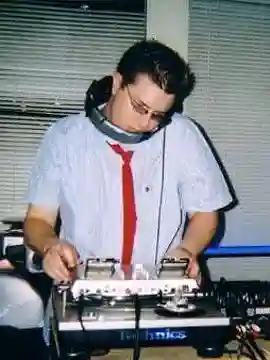
About the author
BH Shepherd is a writer and a DJ from Texas. He graduated from Skidmore College in 2005 with degrees in English and Demonology after writing a thesis about Doctor Doom. A hardcore sci-fi geek, noir junkie and comic book prophet, BH Shepherd has spent a lot of time studying things that don’t exist. He currently resides in Austin, where he is working on The Greatest Novel Ever.
